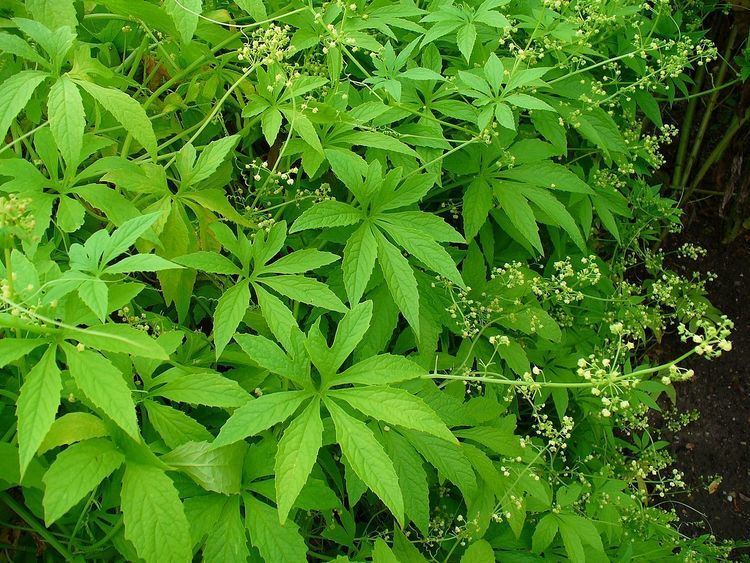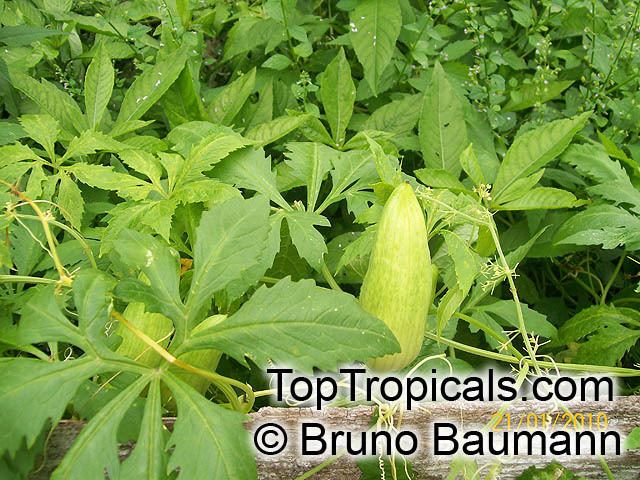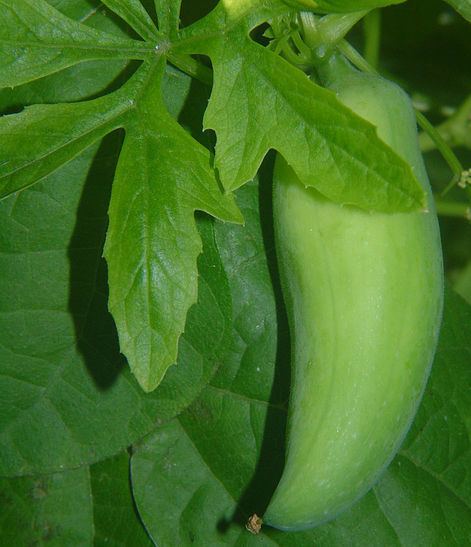Rank Species | Genus Cyclanthera Higher classification Cyclanthera | |
 | ||
Similar Ullucus, West Indian gherkin, Chayote, Horned melon, Figleaf Gourd | ||
Cyclanthera pedata, locally known by its Quechua names kaywa (pronounced kai-wa, hispanicized spellings caigua, caihua, caygua, cayua) or achuqcha (also spelled achocha, achogcha, achojcha, achokcha, archucha), is a herbaceous vine grown for its edible mature fruit, which is predominantly used as a vegetable. Kaywa is known from cultivation only, and its large fruit size as compared to closely related wild species suggests that it is a fully domesticated crop. Its use goes back many centuries as evidenced by ancient phytomorphic ceramics from Peru depicting the fruits. It is also known as slipper gourd, lady's slipper, sparrow gourd (Chinese: 小雀瓜; pinyin: xiǎoquè guā), pepino in Colombia, stuffing cucumber in English.
Contents

Origin and distribution

Domesticated in the Andes and traditionally distributed from Colombia to Bolivia, the kaywa is now grown in many parts of Central America. The Moche culture had a fascination with agriculture and displayed this in their art. The kaywa was often depicted in their ceramics.
Food uses

The young fruits are eaten raw, and older fruits are cooked. Inter-harvest periods are of 2-3 weeks. fruits The kaywa has a subtle flavour similar to cucumber. The fruit has a large cavity in which the seeds develop, and this can be filled with other foods to make kaywa dishes. This may have inspired the local Spanish name pepino de rellenar ("stuffing cucumber"). The young shoots and leaves may also be eaten as greens.
Phytochemicals
The ripe fruit contains phytochemicals such as peptins, galacturonic acid, resins, lipoproteins and various steroidal compounds.


